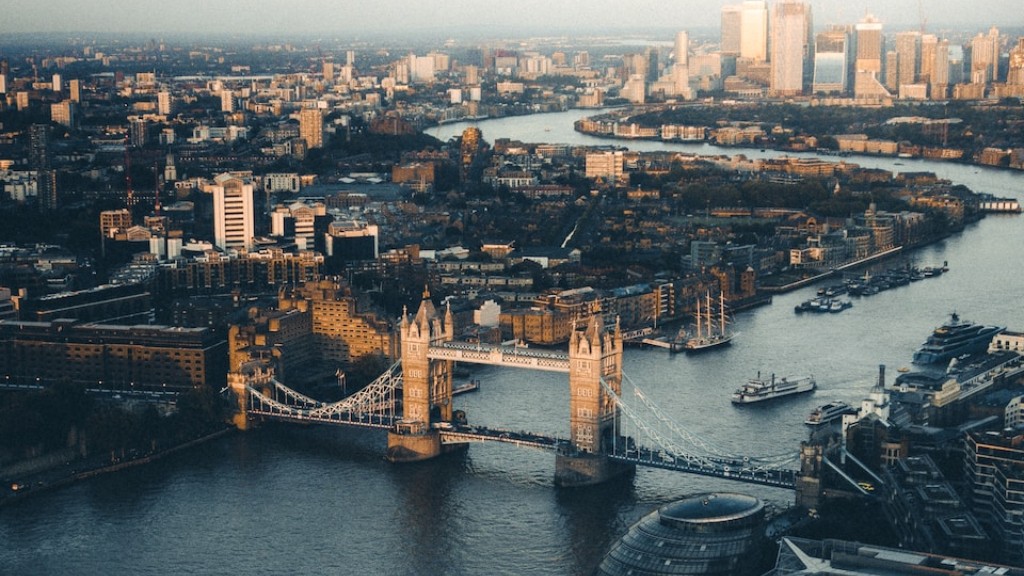Travel by Land
The roads of medieval England were often muddy, muddy, and rutty pathways, making for a long and often uncomfortable journey. Oxen and horses were the primary beasts of burden that carried people and goods on the roads of medieval England. Common people would ride horses and own oxen to move from one place to another. Merchants, military personnel, and royals traveled by carriages with attendants to make their journeys more comfortable.
The roads providing the main arterial links were several times a year used for royal progressions. Infrastructure, such as bridges and ferries, also existed to help travelers move more quickly. The most important role of the medieval network of roads was to link towns, villages, and small hamlets.
Other than the roads managed by towns, forests and cross-country riding were popular routes for traveling. The forest of Sherwood is one of the most well-known examples of a road through the wilderness. These would not be well defined roads though, and travelers would need good orienteering skills to get through.
Traveling by land during the Middle Ages was known to involve a certain amount of danger, however. Highwaymen and robbers were known to prey upon unsuspecting travelers. It was best to travel in groups and at daylight for greater security.
Travel by Sea
The sea was a popular route for travelers, and the port of London was one of the busiest in the world. Water was a more reliable and often faster route for travelers moving between countries. People and goods could be transferred across the English Channel with ease and at greater speeds than on land. The network of waterways and the navigable rivers added to the benefit of travel by sea.
In coastal towns, boats used for fishing and transportation became an important means of communication. Ships were also popular for trading, and many merchants would sail their merchandise on long voyages from one country to another.
The seas were also a dangerous place, however. Pirates and storms were known to wreak havoc on ships at sea, and many ships were never seen again. Still, many travelers braved the sea to find new lands or reach their destinations or go on pilgrimage.
Travel by Air
Travel by air in medieval England was limited to hot air balloons and kites. These could be used to carry cargos, and even sometimes emperors, to destinations. Hot air balloons and kites were a popular form of entertainment and play for children in the Middle Ages.
Local and Long Distance Travel
Many people traveled locally within their parishes and villages to attend fairs and markets. Local travel also included the pilgrimage, which was extremely popular in medieval England. Many people traveled afar to visit prominent shrines or religious centers.
Traveling at long distances was much more difficult in the Middle Ages than today. Long journeys usually took a few weeks, even months. The main challenge was to secure the necessary travel permits and money to make the journey. Most people could not afford long-distance travel, and those who could, still needed permission from their local lord to travel.
Travel Accommodations
Medieval travelers would not be able to book trips in advance or plan their journey online. Travelers would usually stop at churches, inns, monasteries, or private homes to rest. Inns provided a basic level of accommodation and were often used to store travelers’ belongings.
Monasteries were another type of accommodation available to travelers. Monasteries provided travelers, as well as the ill and poor, with shelter and food. This was seen as a charitable act in medieval England and was seen as a way for the monasteries to build reputation and prestige.
Private homes could also provide travelers with beds and meals. These individuals were typically rewarded with gifts, such as coins or luxury items, in return for their hospitality. Roaming minstrels were often welcomed into homes and rewarded with food, coins, or stories for sharing their songs.
Travel Safety
Travel was generally safe within England, however travelers still had to beware of highwaymen and robbers along the roads. It was best to travel in groups and at daylight for greater protection. Traveling at sea was also dangerous due to pirates and storms.
Travel Documentation
Most travelers would have to provide letters of safe passage or credentials in order to move through relative lands. These papers were typically issued by local lords or other authorities in order to prove the identity of the traveler. Travelers were also expected to pay customary fees in order to pass through.
Conclusion
Travel during the medieval period was a difficult and sometimes dangerous endeavor. Roads and waterways were the main arteries of transportation, with carriages, horses, boats, and hot air balloons providing the means to move from one place to another.Safety, accommodations, and travel documentation were all factors medieval travelers had to consider when planning a journey, and travelers usually traveled in groups or with letters of safe passage to ensure their safety.




